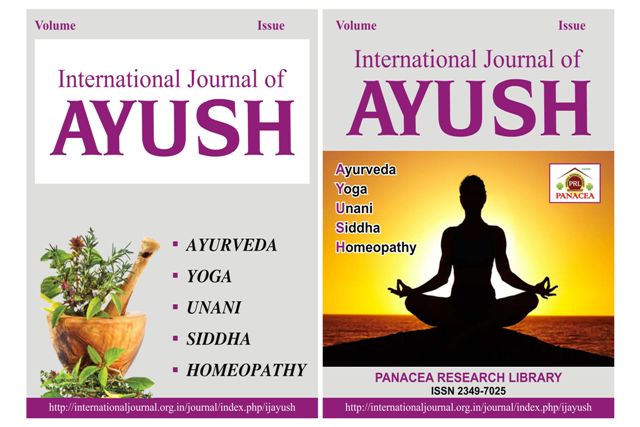INTEGRATIVE APPROACH TO KASHTARTAVA (PRIMARY DYSMENORRHEA): A CLINICAL CASE STUDY ON AYURVEDIC INTERVENTION AND PAIN MANAGEMENT
DOI:
https://doi.org/10.22159/prl.ijayush.v14i02.1251Keywords:
Primary Dysmenorrhea, Kashtartava, Vata Dosha, Panchakarma, Ayurvedic Treatment, Yonishoola PrashamanaAbstract
Background: Primary Dysmenorrhea (Kashtartava) is a common gynecological disorder caused by Vata Dosha vitiation, leading to uterine spasms and pain. Conventional treatments, including NSAIDs and hormonal therapy, may have side effects. Ayurveda offers a holistic approach through Panchakarma, herbal formulations, and lifestyle modifications. Case Presentation: A 20-year-old female with severe lower abdominal pain during menstruation (past four years) experienced fatigue, nausea, and mood swings. Her regular menstrual cycle (28-30 days) showed no structural abnormalities on USG. Previous analgesic use provided only temporary relief. Intervention: Panchakarma Therapy: Abhyanga with Dhanvantaram Taila – 15 min daily Swedana with Dashamoola Kwatha – 10 min daily. Basti Karma (Dashamoola Niruha Basti, Anuvasana Basti on alternate days) Oral Medications: Ashwagandha Churna, Shatavari Kalpa, Hingwashtaka Churna, Triphala Guggulu Diet & Lifestyle: Pathya Ahara (Vata-Pitta pacifying diet). Yoga & Pranayama (Baddha Konasana, Supta Baddha Konasana, Anulom-Vilom) Outcome: Pain intensity reduced from VAS 8/10 to 2/10 by the third cycle, with improved digestion, energy levels, and emotional well-being, eliminating the need for analgesics. Conclusion: This case highlights the efficacy of Ayurvedic management in treating Kashtartava by addressing the root cause rather than symptomatic relief. A combination of Panchakarma, herbal therapy, diet, and lifestyle modifications provides a safe, holistic, and effective approach to Primary Dysmenorrhea. Further clinical trials are needed to validate these findings.



